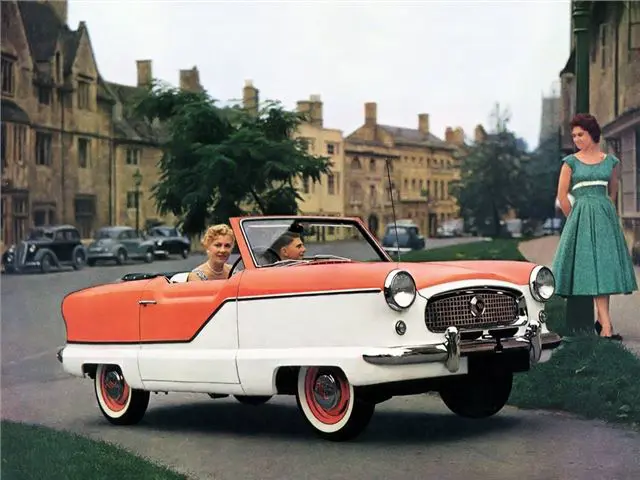THE METROPOLITAN 1500 REVISITED
05 May 2021
Both during its lifetime and after, the British-market Metropolitan 1500 received some very mixed reviews. The Motor of 3rd April 1957 noted in a very imperious fashion that the reader would be able to “…place his own emphasis on its traits according to his own tastes and circumstances…”. In other words – if you buy this car, you run the risk of being regarded as a vulgarian and quite possibly a cad into the bargain.
54 years later, Brian Sewell ranted that it was “a preposterous aberration incorporating the worst of everything American…” with its “…vile colours…”. Furthermore, “air turbulence has much the same effect on the Metropolitan as white water on a canoe”. One starts to gain the impression that Mr. Sewell was not a fan.

Yet, such diatribes ignored both the Metropolitan's considerable charm and its achievements. Its story commenced in 1950 when Nash Motors commissioned a survey, with questionnaires headed ‘Does America Want the Economy Car?’ The answers prompted them to put "Project NX1” into production with a European partner's aid. Fisher & Ludlow made the distinctive bodywork with Austin providing the running gear.
Manufacture commenced in 1953, with US sales beginning in March 1954. It was not available in the UK until April 1957, by which time the Metropolitan had gained a 1.5-litre engine. It was sold via Austin dealers - although it never carried their logo. At £713 for the Hardtop, and £725 for the Convertible, there were virtually no domestic rivals.
Here was a two-seater (the publicity claimed three, but the occupants would have to be very close friends) that resembled a mobile coffee bar. The boot was sealed against rain and dust – i.e. there was no external lid – but at least the specification included a cigar lighter and a heater. Anyone seeking more practical transport opted for the Morris Minor 1000 Convertible, as the Metropolitan was definitely for high days and holidays.
Above all, while many British cars of the 1950s adopted US styling, the Metropolitan was genuinely designed with North America in mind. Of course, the Hillman Minx Audax had pretensions towards 77 Sunset Strip, while Vauxhall successfully marketed the Victor F-Type in Canada as the Envoy. Yet both also made a good deal of sense to a British motorist while the Metropolitan seemed downright frivolous by comparison.
January 1959 saw Series IV's debut, which featured slightly more power, front quarter lights and even a boot lid. However, the launch of a new generation of US ‘compacts’ – the Ford Falcon, the Chevrolet Corvair and the Plymouth Valiant – meant that the Metropolitan's days were numbered. British sales ended in February 1961, two months before the end of production.
Today, the Metropolitan has strong followings on both sides of the Atlantic. Martin Buckley of Classic & Sports Car arguably encapsulated its appeal:
“…in a way, the Metropolitan is less a "Lost England" classic and more a vehicle seemingly built for a '50s world of skiffle and Tommy Steele films: an Expresso Bongo car (look it up) that seems to perfectly channel the vibe of a time when we British yearned for anything American.”
And in this regard, who could resist one of the jauntiest cars to hail from Longbridge? Especially as there is space for a washboard or two in the alcove behind the seat.
Why choose Lancaster Classic Car Insurance?
Here at Lancaster, we love classic cars as much as you do and we understand what it takes to protect them for future generations.
We have links with some of the top classic car clubs around the country and some of our policies even offer discounts of up to 25% for club members.
Other benefits of classic car insurance through Lancaster can include:
- Historic rally cover
- Static show cover
- Limited mileage discounts
- Choice of repairer
- 24-hour claims helpline.
Give your classic the protection it deserves and get a quote for your classic today.
